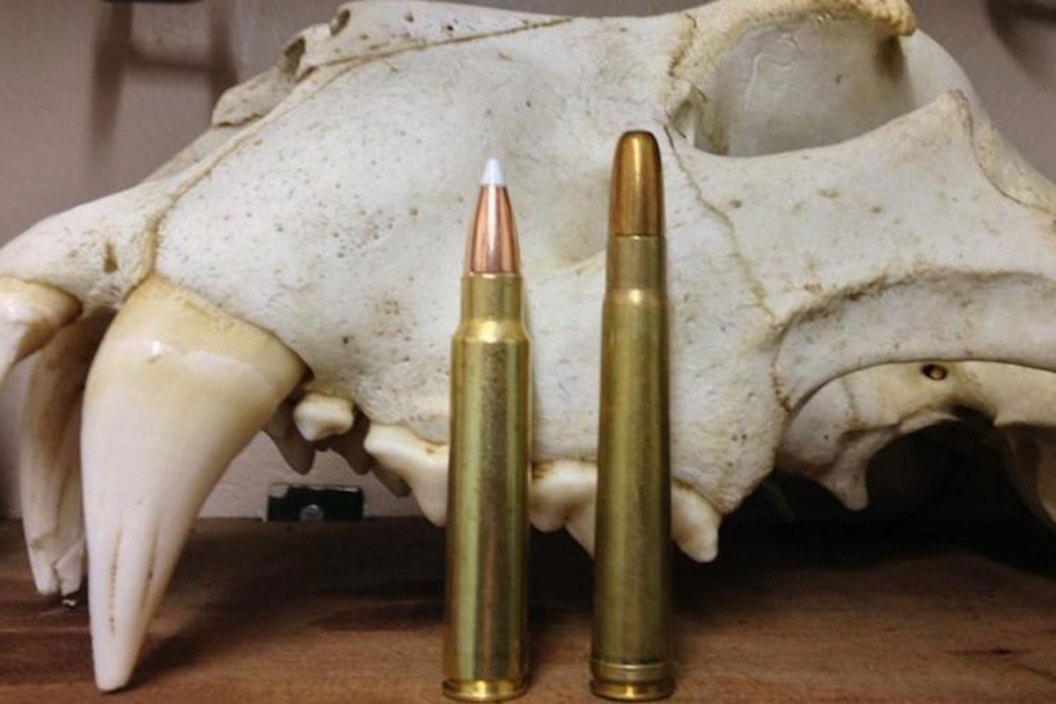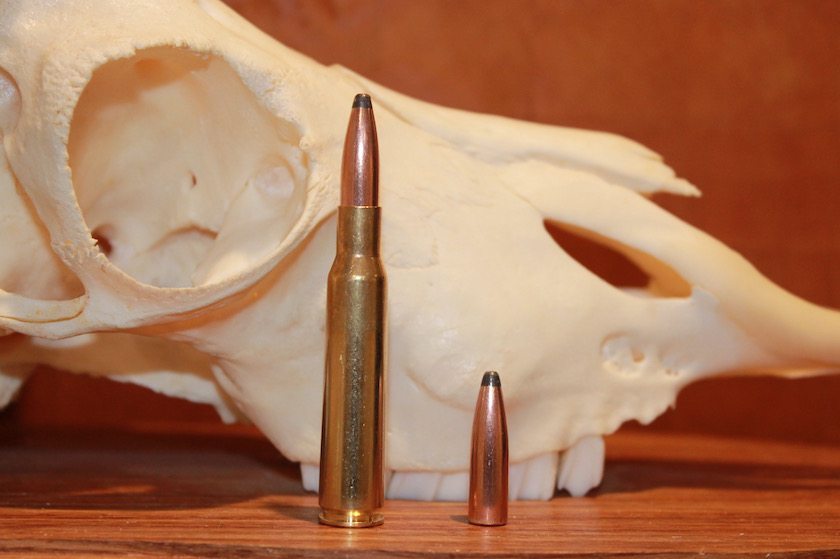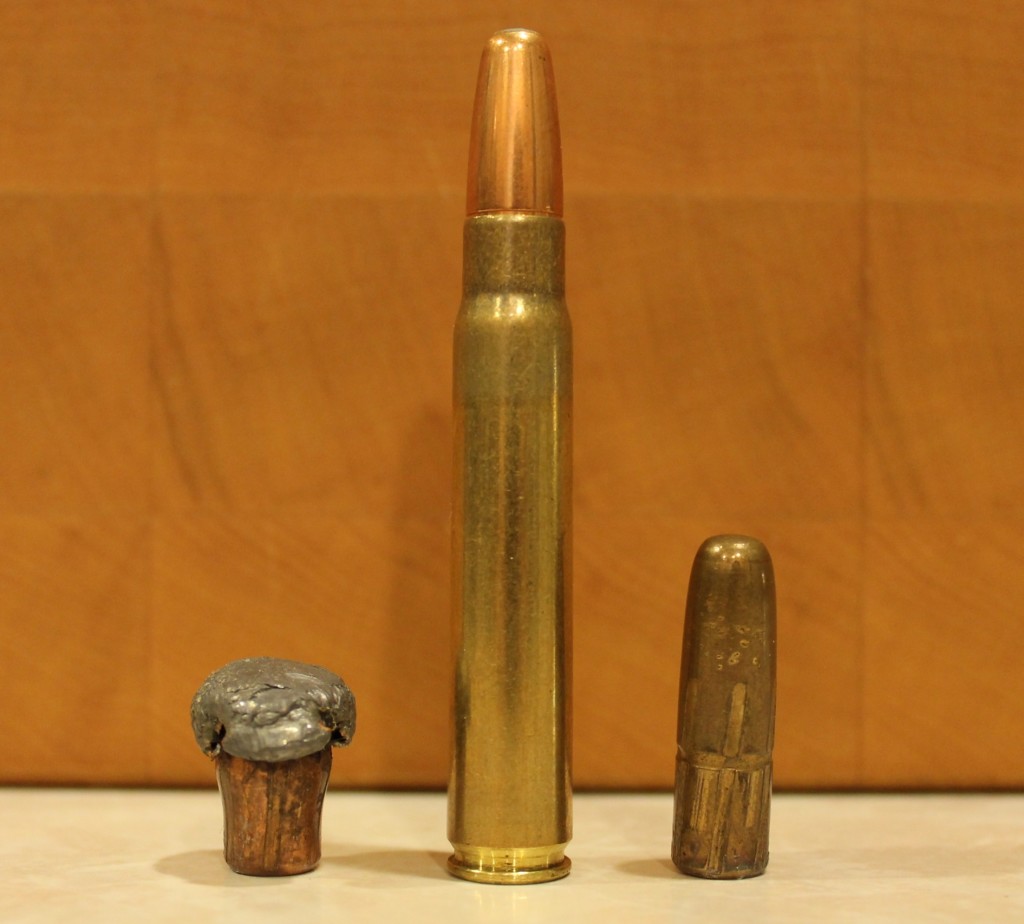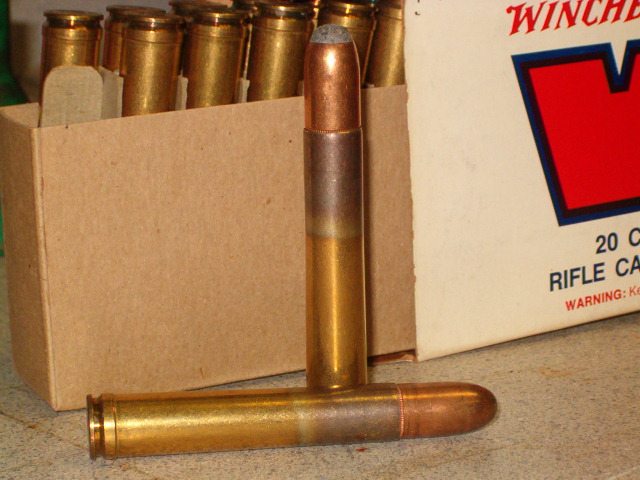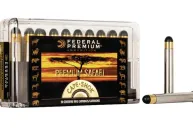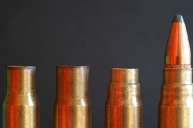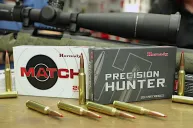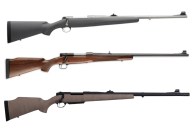Some cartridges perform really well but just don't get the respect they deserve. Here are our picks for the most underrated rifle cartridges for hunters.
Cartridges like the .270 Winchester, .30-06 Springfield, and the .375 H&H (among many others) are all well-regarded in the hunting community. However, there are many underrated rifle cartridges that perform well in the field but don't have reputations that match their capabilities.
Sometimes a cartridge performs very well but doesn't get much publicity and fails to really catch on with the general hunting and shooting public. Sometimes a cartridge gets pushed out of the limelight by a newer cartridge that has a slight edge in performance. Either way, all of the caliber cartridges on this list are solid performers but are not nearly as popular as some of the other choices out there.
Continue reading to see our choices for the most underrated rifle cartridges for hunting big game, small game, or anything in between.
1. .264 Winchester Magnum
When it was first introduced in the late 1950s, the .264 Winchester Magnum was considered state of the art and quickly became extremely popular. Developed using the .375 H&H Magnum as a parent case, the .264 Winchester was significantly more powerful than the .270 Winchester rifle cartridges yet would still fit in a standard-length rifle.
There are many things to like about the .264 Winchester: it's flat-shooting, it's accurate, and it has surprisingly little recoil. This made it very popular among varmint and deer hunters out west where long-range shots were more common.
However, the introduction of the 7mm Remington Magnum in the early 1960s was the beginning of the end for the .264 Winchester. While the 7mm Remington Magnum doesn't shoot quite as flat, it does use a little more bullet weight and didn't have a reputation for excess barrel wear like the .264 Winchester did.
Even though it isn't nearly as popular or common as it was when first introduced, rifles chambered in .264 Winchester Magnum and factory ammunition can still be found if you look hard enough. It's an underrated rifle cartridge these days to be sure, but it's still a great choice for an elk, mule deer hunting, or a pronghorn hunt out west.
2. 7x57mm Mauser
The 7x57mm Mauser (also known as the 7mm Mauser) was a major leap forward in the evolution of rifle cartridges when it came onto the scene in the 1890s. The smokeless 7mm Mauser was originally developed as a military cartridge, and it was very successful in this regard. However, it was also very popular in the hunting community. The fact it had mild recoil and a relatively flat trajectory and could fire bullets with a very high sectional density that penetrated very well made it an instant hit among big-game hunters.
It's an excellent cartridge for hunting plains game, but it can be used to hunt much larger animals, too. The famous hunter "Karamojo" Bell killed hundreds of elephants with brain shots from a 7mm Mauser (known as the .275 Rigby by the British). While I don't recommend using the 7mm Mauser on thick-skinned, dangerous game like buffalo and elephants (and doing so is illegal in many countries), Bell's feats with the cartridge do a good job of demonstrating the capabilities of the cartridge in the right hands.
Many modern cartridges surpass the ballistics of the 7mm Mauser, and the cartridge has declined in popularity over the years. However, even though the 7mm Mauser is one of the most underrated rifle cartridges, there is absolutely nothing wrong with it. Many hunters all over the world, particularly in Europe, still use the 7x57mm Mauser for hunting deer-sized game, moose, or bear.
3. .35 Remington
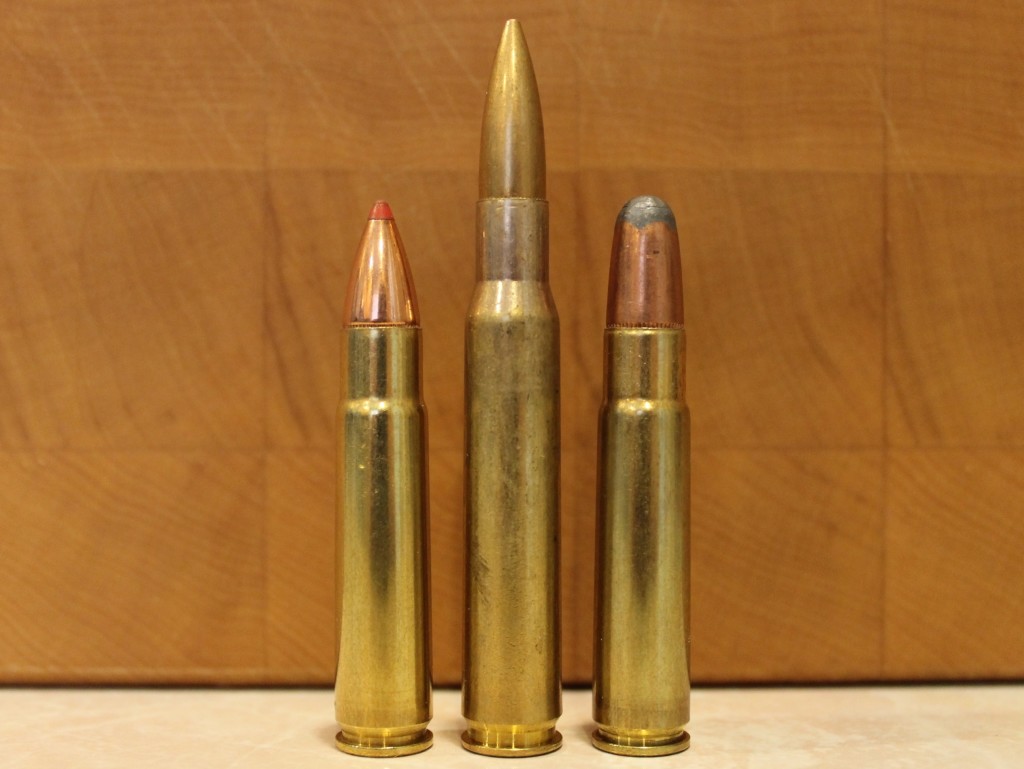
Two .35 Remington cartridges and a .30-06 Springfield, Courtesy Of The Big Game Hunting Blog
Designed in the early 1900s along with Remington's new Auto-Loading Rifle, the .35 Remington was marketed as a competitor to the venerable .30-30 Winchester. Even though the cartridge was ballistically superior to the .30-30 Winchester and did catch on with the hunting community, it never quite achieved the popularity of the .30-30 Winchester.
Unfortunately, even though it's a capable cartridge for hunting medium and even large game at close range, the cartridge has slowly declined in popularity over the last century. Hunters wanting a flat-shooting cartridge for longer-range hunting have turned to more modern cartridges. Similarly, many hunters looking for a good woods gun have remained faithful to the .30-30 Winchester.
That being said, even though the .35 Remington is still a very underrated rifle cartridge, it's maintained a loyal following. It's also perfectly suitable for hunting game like feral hogs, whitetail deer, black bear, and moose.
Factory ammunition is still readily available and many great rifles, like the Marlin 336, are still manufactured in .35 Remington.
4. 9.3x62mm Mauser
While it is relatively popular in Europe, the 9.3x62mm Mauser is one of the most underrated rifle cartridges in North America. This is a shame because the 9.3x62mm Mauser is one of the best all-around hunting cartridges in the world. It delivers about 90 percent of the power of the .375 H&H Magnum with less recoil and fits in a standard length (instead of a magnum length) rifle action. This makes it an extremely versatile rifle cartridge.
Shooting appropriate caliber bullets, a rifle chambered in 9.3x62mm Mauser is suitable for hunting everything from the smallest of the tiny 10 species of antelope all the way up to the biggest eland. It will also certainly work on large, thick-skinned dangerous game, and hunters armed with the 9.3x62mm Mauser have killed thousands of buffalo and elephant over the last century.
That being said, the 9.3x62mm Mauser is a little on the light side for extremely large species of dangerous game and has a smaller margin of error than more powerful cartridges like that .375 H&H Magnum.
Even though it is one of the most underrated rifle cartridges in the United States, factory loaded 9.3x62mm Mauser ammunition is fortunately readily available (though not exactly plentiful). The same thing goes for rifles chambered in the cartridge. So, if you want a great all-around hunting rifle and you don't like being in the mainstream, then the 9.3x62mm Mauser is the perfect choice for you.
5. .375 Ruger
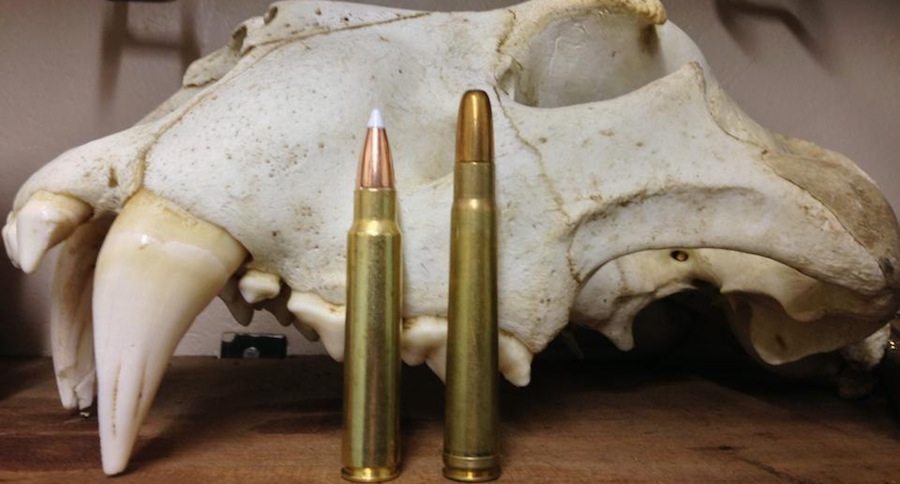
.375 Ruger (left) and .375 H&H (right), courtesy of The Big Game Hunting Blog
The .375 H&H Magnum is the standard by which most dangerous game cartridges are measured. The fact it has been around for over 100 years and is still considered one of the best all-around cartridges for North American big game animals really says something.
However, the .375 Ruger may be the most serious competitor to the crown worn by the venerable .375 H&H for the last century. In fact, though the jury is still out, the .375 Ruger might even be better than the .375 H&H.
The goal of the designers of the .375 Ruger was to match the performance of the .375 H&H while using a standard length (instead of a magnum length) case. Since it has a straight-walled case with no taper, the .375 Ruger actually has a larger powder capacity than the .375 H&H even though it is 7mm shorter. Because of this, the .375 Ruger has a high velocity edge when shooting the same size bullets at the .375 H&H.
Not only will it meet or even exceed the performance of the .375 H&H, but because the case will fit in a standard length action, rifles chambered in .375 Ruger are shorter, lighter, and handier than comparable rifles chambered in .375 H&H. The .375 Ruger is also building up a solid performance record afield, and hunters have taken a tremendous amount of game with it over the past few years.
The biggest strikes against the .375 Ruger are that it is a relative newcomer to the hunting community and it is directly competing with one of the most popular hunting cartridges of all time in the .375 H&H. However, it is unique on this list of underrated rifle cartridges in that its popularity is actually increasing. Only time will tell what will become of the .375 Ruger, but it certainly has a bright future.
BONUS: .458 Winchester Magnum
After its commercial release in 1956, the .458 Win Mag was an instant hit among big game hunters who wanted a hard-hitting cartridge that could fit in a standard-length, bolt-action rifle. The development of the cartridge coincided with an increasing number of American hunters journeying to Africa on safari and the cartridge quickly became one of the most popular dangerous-game cartridges on the continent.
Unfortunately, problems began to surface regarding the performance of the .458 Winchester in the years following its release. Reports of "squib" loads started trickling in from the field. When that happened, the bullets penetrated poorly, or in some extreme cases, even bounced off animals! This is obviously not something you want to happen when hunting dangerous game, and these incidents resulted in the deaths of several hunters and many more sustained serious injuries. Among those injured was Jack Lott, a well-known professional hunter and writer. Lott found himself on the wrong end of a scuffle with a Cape Buffalo after his .458 Winchester failed to do the job.
Not surprisingly, the reputation of the .458 Winchester took a major hit. Several other cartridges, like the .458 Lott (designed by Jack Lott after his bad experience with the .458 Winchester), were created as improvements to the .458 Winchester.
So, what was the problem with the cartridge?
Meant to duplicate the performance of the extremely effective (and popular) .450 and .470 Nitro Express cartridges, Winchester intended the .458 Winchester to shoot a 500-grain bullet at 2,150fps from a 26-inch barrel. Since the .458 Winchester was developed from a .375 H&H case shortened to 2.5 inches in order to fit in a standard-length action, there wasn't quite enough space in the case to fit the powder necessary to achieve those ballistics without compressing it. These compressed loads eventually resulted in clumped powder charges, which often ignited erratically and failed to generate anything close to desired velocities.
Winchester quickly corrected the problem by revising their performance standards downward to a 500-grain bullet at 2,040 fps, which no longer necessitated a compressed load of powder. This was still a very potent load and was quite effective on thick-skinned dangerous game. However, the damage had already been done.
Slowly but surely, the reputation of the .458 Winchester is improving. Modern advances in powder technology allow manufacturers and handloaders to safely produce loads matching or even slightly exceeding the original performance standard for the .458 Winchester. But now they use a shorter 24-inch barrel and don't need to compress the powder.
A 500-grain bullet at 2,150 fps is strong medicine for even the biggest buffalo and elephant. However, the cartridge still hasn't quite shaken the stigma it earned many years ago, thus earning a spot on this list of underrated deer cartridges.
Products featured on Wide Open Spaces are independently selected by our editors. However, when you buy something through our links, we may earn a commission.
NEXT: THE 6 BEST HANDGUNS FOR HUNTING
